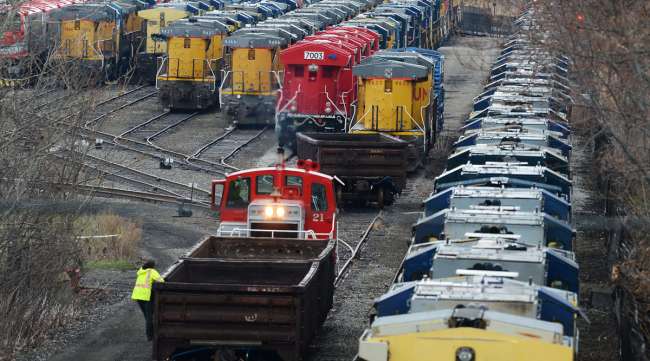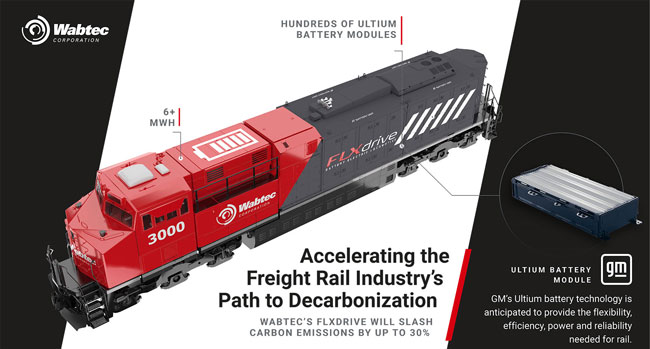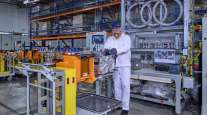GM, Wabtec Agree to Make Electric and Hydrogen-Powered Trains

[Ensure you have all the info you need in these unprecedented times. Subscribe now.]
General Motors Co. and Wabtec Corp. have signed a nonbinding agreement to build locomotive engines using the automaker’s Ultium electric battery and its Hydrotec hydrogen fuel-cell system, the companies said June 15.
The two companies will jointly develop the clean-powered locomotives for heavy-haul trains, they said in a statement. They didn’t say when the technology would be ready.
For GM, the deal would give the company another way to sell its Ultium battery technology and a means to get its hydrogen fuel-cell system into production. Wabtec would get a zero-emission drivetrain for its locomotives as the company moves on a commitment to have 30% of its train engines powered by eco-efficient technology by 2030.

Wabtec
“By working with GM on Ultium battery and Hydrotec hydrogen fuel-cell technologies, we can accelerate the rail industry’s path to decarbonization and pathway to zero-emission locomotives by leveraging these two important propulsion technologies,” Wabtec CEO Rafael Santana said in the statement.
Wabtec has already developed a electric locomotive called FLXdrive that lowers fuel use by pulling the train with other diesel-powered engines. The electric locomotive can take over at cruising speeds or when pulling cars around the rail yard.
The Pittsburgh-based company has 23,000 freight locomotives around the world and plans to replace them over time with cleaner engines.
GM has been out of the locomotive business since 2005, when the automaker sold that unit for an undisclosed sum.
Want more news? Listen to today's daily briefing below or go here for more info:




